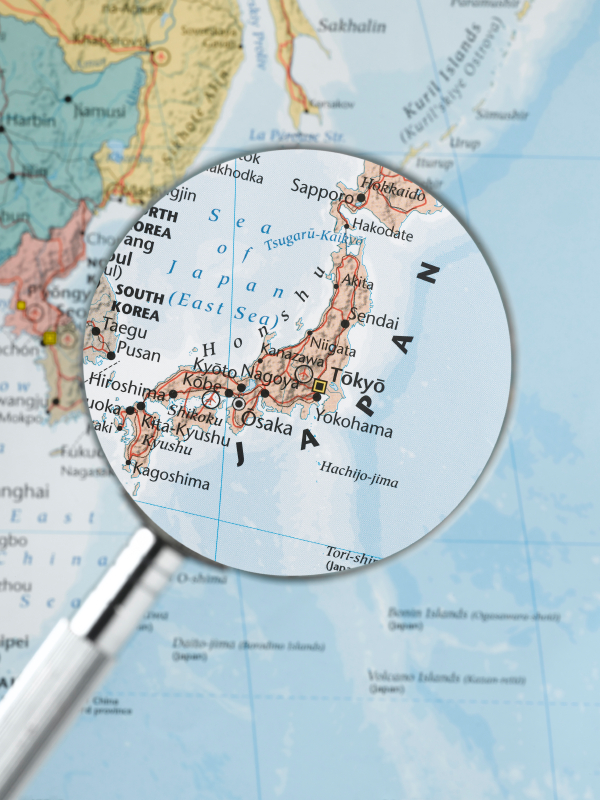Experienced Investor
Will Japan’s new found willingness to pay dividend income lure investors?

Last year, Japan was one of the best performing major stock markets around the world. But its surprise move at the end of January 2016 to adopt a negative interest strategy (-0.1%) left investors nervous and wondering whether it can maintain its pole position.
So in the current climate, should investors hedge their bets on Japan? Yourmoney.com spoke to four investment analysts who all say it’s an exciting time in Japan as it moves towards a dividend payments culture, though they assess this positive against the backdrop of its weakened currency, the yen.
Why does Japan look attractive?
There’s concrete evidence that companies are changing their behaviour from a focus on stakeholders to shareholders, according to George Boyd-Bowman, manager of the Neptune Global Income fund. Whereas 20 years ago he says companies didn’t give a “stuff” about dividends or shareholders, now they are becoming more shareholder friendly.
He supports this claim by explaining that Japan has long had the ability to pay higher dividends to shareholders. Indeed the 1,880 companies that make up the Topix Index are sitting on nearly £650bn of cash, which is the equivalent to an economy the size of Switzerland. However with its new found willingness, he argues this is a “powerful cocktail for dividend growth”.
Corporate governance reform is also impacting the Japanese economy. With the launch of the JPX-Nikkei 400 Index in January 2014, it had an explicit 5% return on equity (ROE) threshold, which incentivised companies to both invest more into their businesses and crucially, increase the level of shareholder returns. The Japanese firm Amada was not included in the new index, so as a result, it increased its dividend. Another company, Fanuc, avoided talking to shareholders, says Boyd-Bowman, but now it has an investor relations department.
“In our opinion, the combination of this new found willingness and longstanding ability to enhance shareholder returns means Japan has the potential to generate the strongest dividend growth amongst developed markets over the next decade.”
He expects dividend payout ratios to rise significantly from current levels of just 30% towards payout ratios comparable to those in the UK of about 60%. He is so confident in Japan that 23.2% of the Neptune Global Income fund is invested there, in comparison with 11.1% held in the UK.
Darius McDermott, managing director of Chelsea Financial Services, has also seen a big pick up in the number of companies paying dividends in Japan in the last 10 years and echoes Boyd-Bowman’s comments that there’s been an increase in the amount of dividend payout ratio.
“Japan now certainly can be considered as a dividend market,” McDermott says.
The graph below shows Japan’s performance during 2015, versus the US, Europe and the UK.
For Ryan Hughes, fund manager at Apollo Multi Asset Management, while Japan certainly should be considered for your portfolio, he adds the dividend culture is still developing.
“In the UK, there’s a long history of companies recognising the importance of paying a dividend. In Japan, the dividend culture is still in its infancy,” Hughes says.
However, while there is scope for it to grow very strong, he says the typical yield is low in comparison to other markets.
What are the risks of investing in Japan?
McDermott says while Japan is attractive to investors, it’s also a volatile market and as such, should be considered higher risk. “Also for a UK investor to invest in Japan for income, you’re also adding currency risk,” he warns.
Japan is still in the middle of a substantial Quantitative Easing programme and many think this will be extended. “This should be supportive of the equity market but has also weakened the yen – currency is something investors need to take into account”, he adds.
If the yen weakens against the pound, this will be bad for returns to UK investors whereas the other way round, it would be a boost.
For John Husselbee, head of multi asset at Liontrust, Japan is still “trying to find the velocity to escape deflation for more than a couple of decades” which is hindering economic growth.
Despite the Bank of Japan implementing negative interest rates on excess reserves held at central bank which supports a reflationary policy, the Japanese market is yet to be significantly re-rated and may struggle to do so with the “headwind of slower global growth,” Husselbee says.
He adds the search for income continues to widen as both cash and government bond yields remain near to historic lows and as such, UK investors are looking overseas.
“Looking at a number of global equity income funds, the current geographical allocation seems to favour US and European markets rather than Far East and emerging markets. Japan has the potential to become an income story as companies continue to improve governance and shareholder returns” he adds. But similar to Hughes’ statement on low yield, he says there are only a few funds to access equity income in Japan and with yields around 2%, investors continue to be drawn elsewhere.
How can I invest in Japan?
For McDermott, it “makes sense” for those with a medium to higher risk appetite to have some of your portfolio in Japan.
Both McDermott and Hughes say you can do this via a global income fund or directly via a fund like Jupiter Japan Income. Further, McDermott rates these two Elite Rated Global Income funds: Artemis Global Income has 5% in Japan and LeggMason Clearbridge Global Income fund has just under 8% in Japan.
